Structural Design and Kinematic Modeling of Highly Biomimetic Flapping-Wing Aircraft with Perching Functionality
- PMID: 39727740
- PMCID: PMC11672938
- DOI: 10.3390/biomimetics9120736
Structural Design and Kinematic Modeling of Highly Biomimetic Flapping-Wing Aircraft with Perching Functionality
Abstract
Birds use their claws to perch on branches, which helps them to recover energy and observe their surroundings; however, most biomimetic flapping-wing aircraft can only fly, not perch. This study was conducted on the basis of bionic principles to replicate birds' claw and wing movements in order to design a highly biomimetic flapping-wing aircraft capable of perching. First, a posture conversion module with a multi-motor hemispherical gear structure allows the aircraft to flap, twist, swing, and transition between its folded and unfolded states. The perching module, based on helical motion, converts the motor's rotational movement into axial movement to extend and retract the claws, enabling the aircraft to perch. The head and tail motion module has a dual motor that enables the aircraft's head and tail to move as flexibly as a bird's. Kinematic models of the main functional modules are established and verified for accuracy. Functional experiments on the prototype show that it can perform all perching actions, demonstrating multi-modal motion capabilities and providing a foundation upon which to develop dynamics models and control methods for highly biomimetic flapping-wing aircraft with perching functionality.
Keywords: flapping-wing aircraft; highly biomimetic; kinematics model; perching function.
Conflict of interest statement
The authors declare no conflicts of interest.
Figures



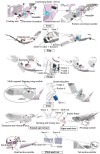






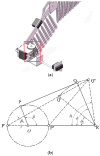
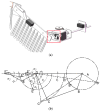
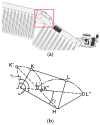











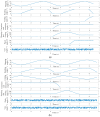
Similar articles
-
Design and Aerodynamic Analysis of a Flapping Mechanism for Foldable Biomimetic Aircraft.Biomimetics (Basel). 2025 Jan 16;10(1):61. doi: 10.3390/biomimetics10010061. Biomimetics (Basel). 2025. PMID: 39851777 Free PMC article.
-
Robust post-stall perching with a simple fixed-wing glider using LQR-Trees.Bioinspir Biomim. 2014 Jun;9(2):025013. doi: 10.1088/1748-3182/9/2/025013. Epub 2014 May 22. Bioinspir Biomim. 2014. PMID: 24852406
-
Aerodynamic analysis of complex flapping motions based on free-flight biological data.Bioinspir Biomim. 2025 Jan 21;20(2). doi: 10.1088/1748-3190/ada85c. Bioinspir Biomim. 2025. PMID: 39787712
-
Hovering and intermittent flight in birds.Bioinspir Biomim. 2010 Dec;5(4):045004. doi: 10.1088/1748-3182/5/4/045004. Epub 2010 Nov 24. Bioinspir Biomim. 2010. PMID: 21098953 Review.
-
Review of insect-inspired wing micro air vehicle.Arthropod Struct Dev. 2023 Jan;72:101225. doi: 10.1016/j.asd.2022.101225. Epub 2022 Dec 1. Arthropod Struct Dev. 2023. PMID: 36464577 Review.
References
-
- Vogel H.F., McCarron V.E.A., Zocche J.J. Use of artificial perches by birds in ecological restoration areas of the Cerrado and Atlantic Forest biomes in Brazil. Neotrop. Biol. Conserv. 2018;13:24–36. doi: 10.4013/nbc.2018.131.04. - DOI
-
- Escrivà A.C., López-Iborra G.M., Cortina J., Tormo J. The use of branch piles to assist in the restoration of degraded semiarid steppes. Restor. Ecol. 2019;27:102–108. doi: 10.1111/rec.12704. - DOI
-
- Huang Z.F., Li S., Jiang J.G., Wu Y., Yang L., Zhang Y. Biomimetic Flip-and-Flap Strategy of Flying Objects for Perching on Inclined Surfaces. IEEE Robot. Autom. Lett. 2021;6:5199–5206. doi: 10.1109/LRA.2021.3070254. - DOI
Grants and funding
LinkOut - more resources
Full Text Sources

